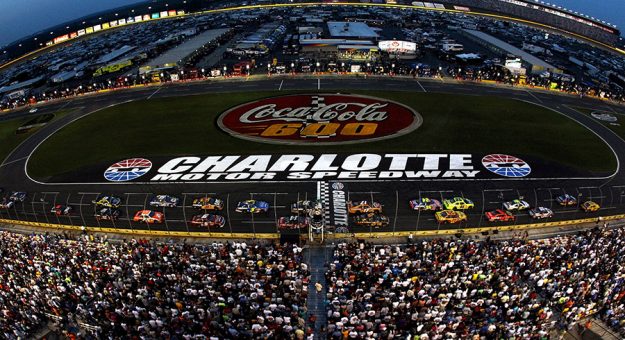H.A. “Humpy” Wheeler, former president and general manager of Charlotte Motor Speedway, remembers the challenges drivers and teams faced by adding the additional 100 miles to the race distance.
“To run 600 miles at that time was very controversial, but doing so also got a lot of publicity,” Wheeler said. “Looking over a period of time, that extra 100 miles had a lot to do with strategy that you don’t have in a 500-mile race. When the superspeedways basically became a normal part of the schedule in the 1960s, drivers and teams would set up their cars for 500 miles. They made them to where they were almost done in at the end of the race.
“Adding 100 miles to that meant having to change a lot of things on the cars to go the full distance. They had to gear them differently and also there were different strategies with tires,” Wheeler added. “There was also the factor of what 600 miles did to the drivers physically during some of those very, very hot Memorial Day weekends, particularly in the days when there was no power steering.”
The World 600 became known as the Coca-Cola 600 in 1985 but continued its reputation as one of the most demanding races on NASCAR’s Cup Series schedule. The May heat, the heat from the cars and occasional thunderstorms made for some exceptionally long afternoons. That led to the Coca-Cola 600 first ending under the lights in 1993, with Dale Earnhardt driving Richard Childress’ Chevrolet to victory.
Bobby Allison, the 1983 Cup Series champion, remembered some difficult May afternoons at CMS.
“The 600 at Charlotte Motor Speedway was always a long race, even when out front of the field,” Allison said. “I would look over at the leaderboard in the infield and see where we had another 100 miles to go and sometimes that was pretty discouraging. It was an incredibly tough race that’s hard on your neck and shoulders. It’s even tougher if you have damage to your car and you’re just trying to finish. I had some good days at Charlotte and won the 600 three times but also had plenty of days of just trying to make it to the end.”
Darrell Waltrip, a five-time winner of the 600, cites various challenges a driver had to endure to win the 600.
“In the 1970s, it was just so hot in those cars,” Waltrip recalled. “We had devices that we wore to cool us down but half the time they didn’t work and would pump hot water around you instead of cold. We also had carbon monoxide issues at times with our cars because they weren’t as tightly built in those days, and an afternoon of that could cause you to have headaches. After 600 miles your arms are tired, your body is tired and you’re just completely worn out. But going to victory lane has a way of taking away a good bit of that fatigue.”
Today’s Cup Series cars carry many advances over the race cars of the past but the 600 remains a challenge. Martin Truex Jr., driver of the No. 19 Joe Gibbs Racing Toyota, enjoyed his second Coca-Cola 600 victory in May of 2019.
“I think in general Charlotte is a pretty physically demanding track and 600 miles just adds on top of that,” Truex said. “For us, if we’re doing our normal week-to-week, 300- to 500 mile races, you have a week to prepare for the 600 and it’s not really a big deal having that extra 100 miles.
“I know for me I’ve been trying to stay as well-prepared as I can, but there’s only so much you can do. There’s no way to practice for a 600-mile race and I feel like being in a race car is something that’s hard to prepare for. I’m just trying to do what I can and the normal deal of eating healthy and drinking lots of water all week”
Brad Keselowski, driver of the No. 2 Team Penske Ford, claims the 600 is still one of the toughest races on the Cup Series schedule.
“This race is a different challenge than anything else we have by a good bit and I appreciate that so much about this race,” said Keselowski who won last year’s 600. “I appreciate that you’re going to go through the daytime and you’re going to be burning hot and the car is going to be out of control. Then we’re going to transition to nighttime and the cars are going to be just crazy fast and you’re going to see a lot of great side-by-side action as we get into nighttime. I think that’s tremendous, and only possible because of the 600 miles.
